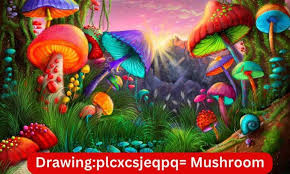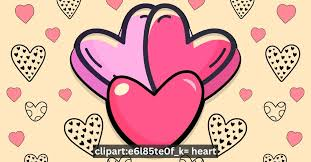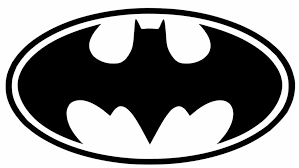Unlock Your Creativity: A Step-by-Step Guide to drawing:plcxcsjeqpq= mushroom

Introduction to the drawing:plcxcsjeqpq= mushroom
Have you ever looked at a mushroom and thought it was more than just a simple fungus? These fascinating fungi come in countless shapes, sizes, and colors, sparking creativity in anyone who dares to pick up a pencil. Drawing mushrooms can unlock your imagination and serve as a wonderful way to express your artistic side. Whether you’re an experienced artist or just starting on your creative journey, this step-by-step guide will help you bring the enchanting world of mushrooms to life on paper. Get ready to explore textures, shadows, and details that turn ordinary sketches into stunning artworks! Let’s dive right in and unleash your inner artist with our guide designed to transform how you see—and draw—mushrooms.
Materials needed for drawing a mushroom
To embark on your artistic journey of drawing a mushroom, gather essential materials to unleash your creativity. Start with a sketchbook or high-quality drawing paper. A smooth surface allows for more precise lines and details.
Next, choose pencils ranging from HB to 6B. The variety will help you create different shades and textures as you work on your piece. Erasers are just as important; have both kneaded and traditional ones at hand for corrections.
Consider using fine liners or ink pens for outlining once you’re satisfied with the pencil sketch. Colored pencils can add vibrancy, while watercolors offer a soft touch if you prefer painting over sketching.
Don’t forget about reference images! Whether it’s photographs or illustrations, these visuals can provide inspiration and guide you in capturing the essence of mushrooms accurately.
Step 1: Sketching the drawing:plcxcsjeqpq= mushroom
Begin your journey by lightly sketching the basic shape of the drawing:plcxcsjeqpq= mushroom. Start with a simple oval for the cap and a narrower cylinder for the stem. Keep your lines gentle; this is just your foundation.
Focus on proportion as you refine these shapes. The cap should be wider than the stem, giving it that characteristic look. Pay attention to how mushrooms naturally taper at both ends.
Next, add curves and slight bumps to mimic nature’s imperfections. No two mushrooms are alike, so let your creativity flow here. Don’t worry about details yet—this step is all about capturing form and structure.
Remember, it’s okay to erase and adjust as needed. Each line brings you closer to creating something uniquely yours! Enjoy this initial stage; it sets the groundwork for what’s next in unlocking your artistic abilities.
Step 2: Adding details and texture to the mushroom cap
Once you’ve laid down the basic shape of your mushroom cap, it’s time to bring it to life. Start by adding some curves and bumps along the surface. These little imperfections make your drawing more realistic.
Consider using short, quick strokes with your pencil or pen to simulate texture. Think about how different species of mushrooms have unique features—some are smooth while others have spots or ridges. Don’t be afraid to experiment!
Next, introduce shading where shadows naturally fall. Pay attention to light sources; this creates depth and makes the cap look three-dimensional.
You can also add patterns like speckles or lines for added character. Each detail contributes significantly to the overall appearance, giving viewers a reason to admire your work longer than just a glance!
Step 3: Drawing the stem and adding shading
Now that your mushroom cap is complete, it’s time to focus on the stem. Start by sketching a gentle curve downward from the base of the cap. This will give it an organic feel.
Next, refine the shape of your stem. It should taper slightly as it reaches the ground. A thicker base can provide stability in appearance.
Shading adds dimension and realism. Consider where your light source is coming from; this will guide you in creating shadows. Use softer pencils or even colored pencils for blending shades along one side of the stem.
Don’t forget texture! Lightly stipple or create small lines to mimic tiny fibers found on real mushroom stems. Experiment with varying pressure to achieve different darkness levels.
Keep stepping back to assess balance and proportion, ensuring everything fits together harmoniously as you bring your drawing closer to life.
Tips for adding depth and dimension to your drawing
To add depth and dimension to your mushroom drawing, start with shading. Use varying degrees of pressure on your pencil to create lighter and darker areas. This will give the illusion of light hitting the cap at different angles.
Consider layering colors if you’re using markers or colored pencils. Start with a base color for the cap, then gradually introduce darker shades along the edges or in shadowy areas. Blend softly to avoid harsh lines.
Texture plays a crucial role too. Don’t shy away from adding fine lines or stippling techniques on the cap’s surface. These details can mimic gills and imperfections found in real mushrooms.
Think about background elements that can enhance your composition. A few grass blades or fallen leaves can create context while framing your subject beautifully without taking away focus from it.
Conclusion to drawing:plcxcsjeqpq= mushroom
Unlocking your creativity through drawing can be a rewarding experience, especially when it involves something as whimsical as the drawing:plcxcsjeqpq= mushroom. By following this step-by-step guide, you have equipped yourself with the skills to bring your artistic vision to life.
You’ve gathered your materials and learned how to sketch, add textures, and create depth in your work. Each step contributes to a more dynamic and engaging piece of art. Remember that practice is key—don’t hesitate to draw multiple mushrooms or experiment with different styles.
Whether you’re an experienced artist or just beginning, embracing this creative process allows for personal expression and exploration. So grab those pencils and let your imagination run wild with every stroke you make on paper!




